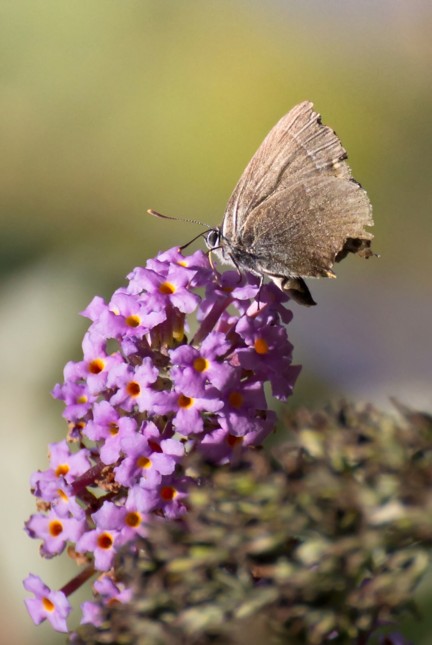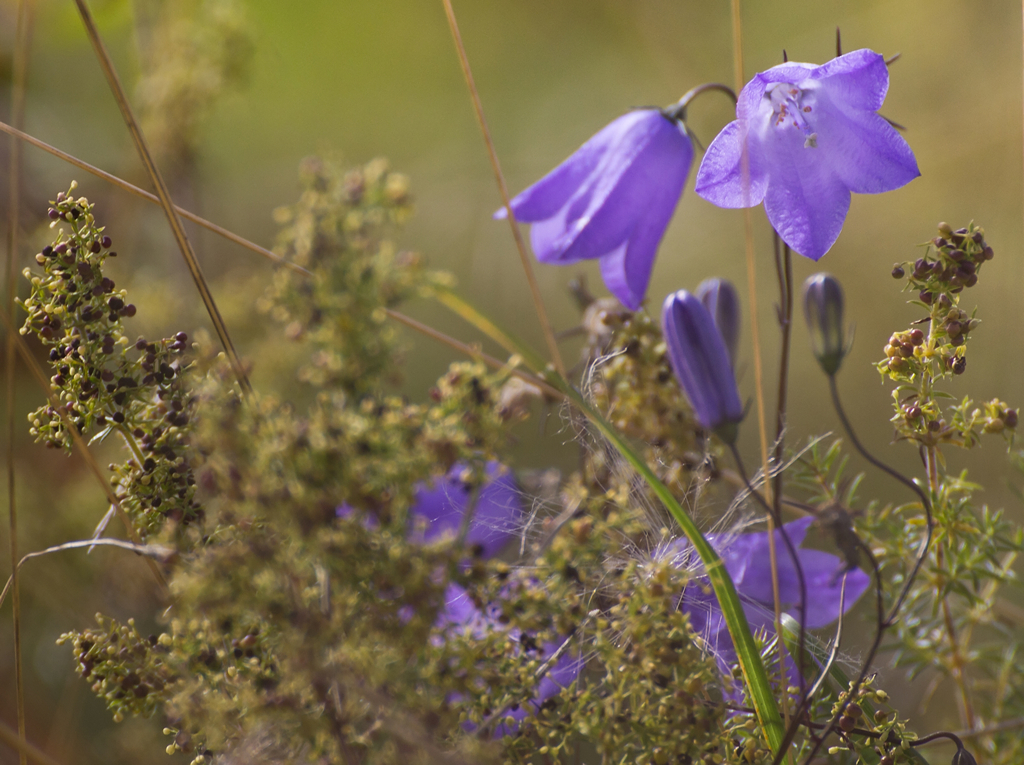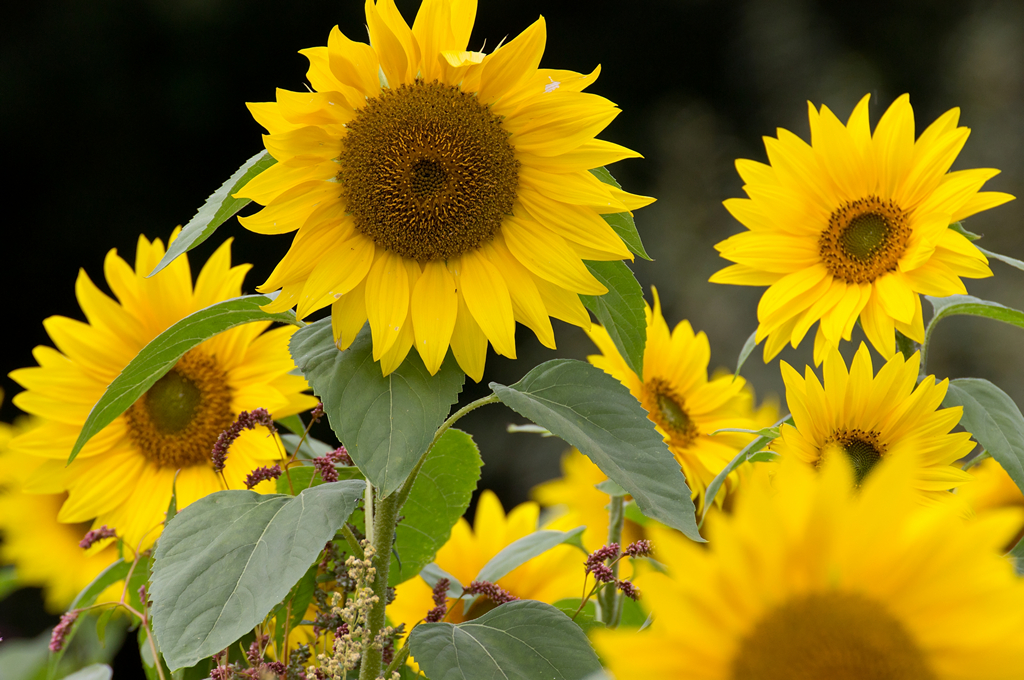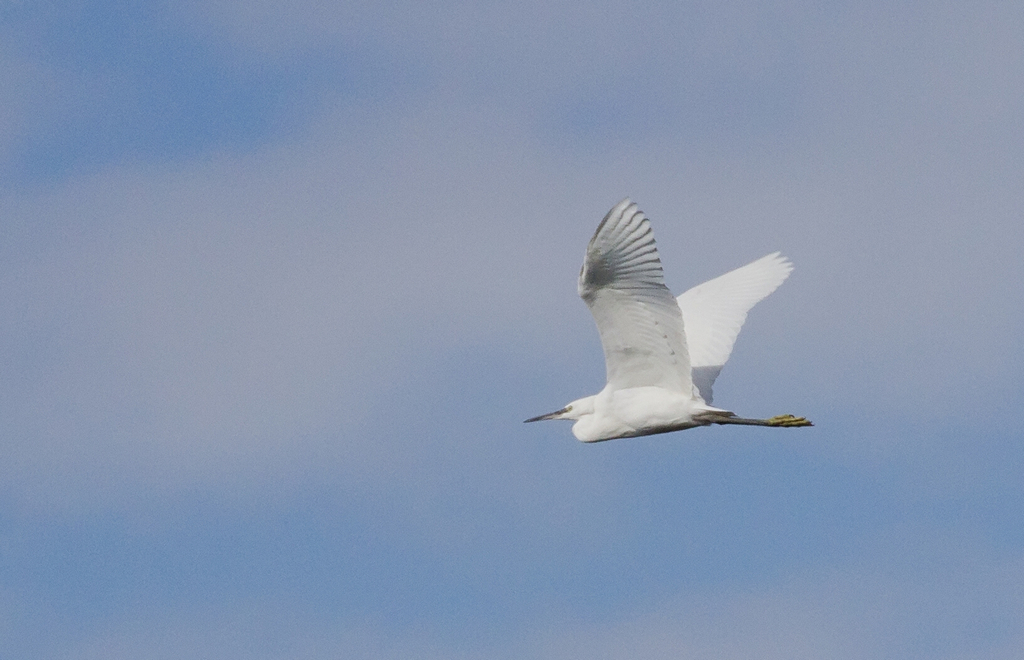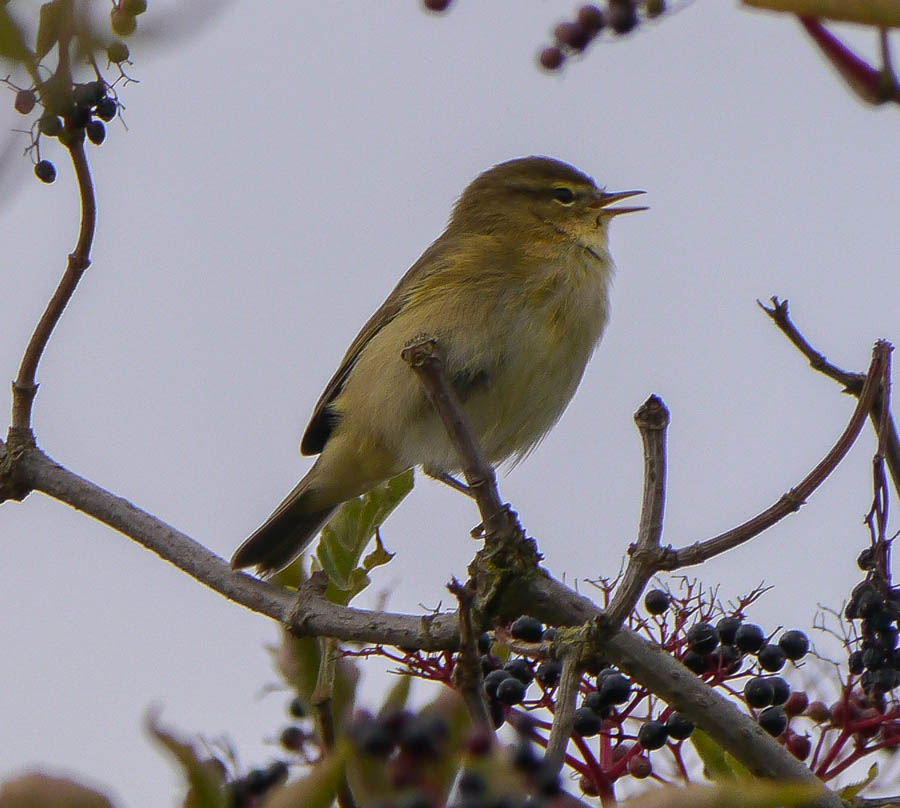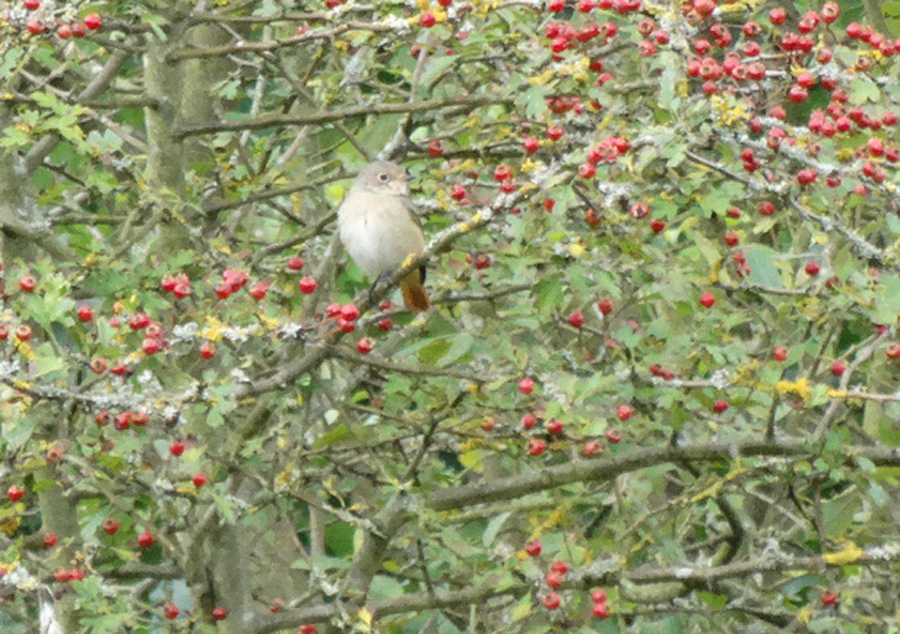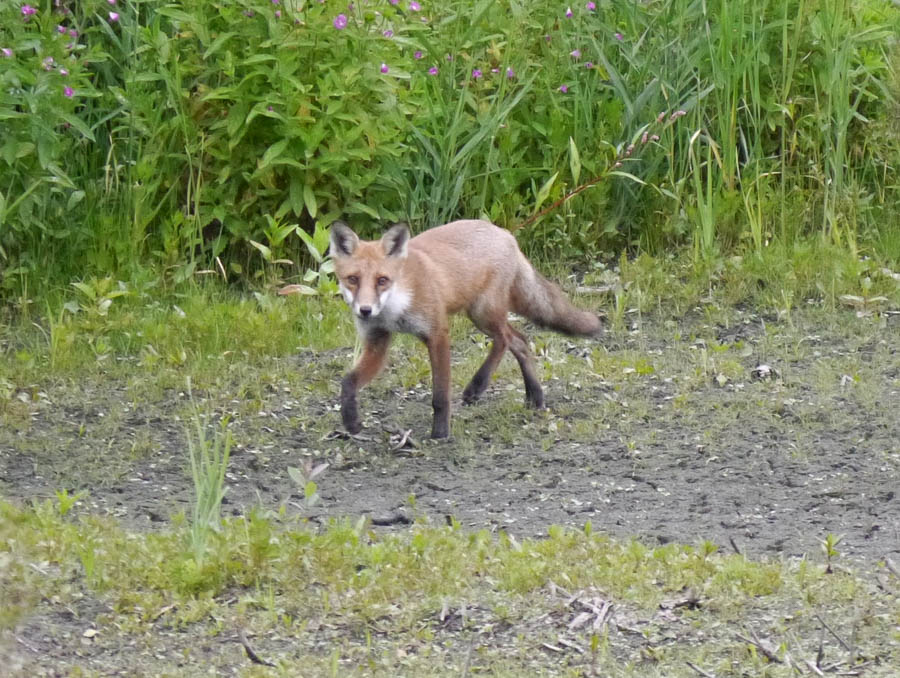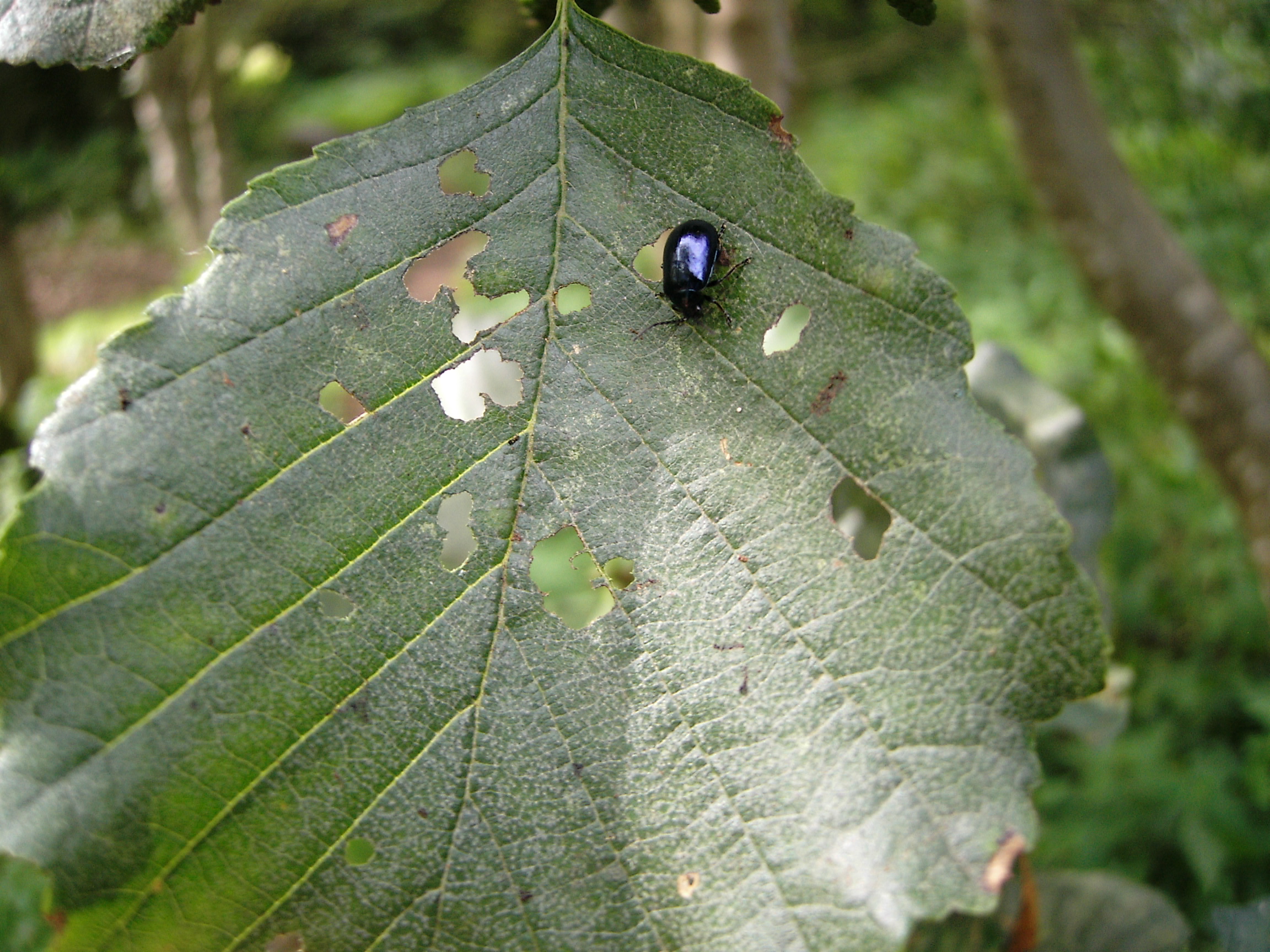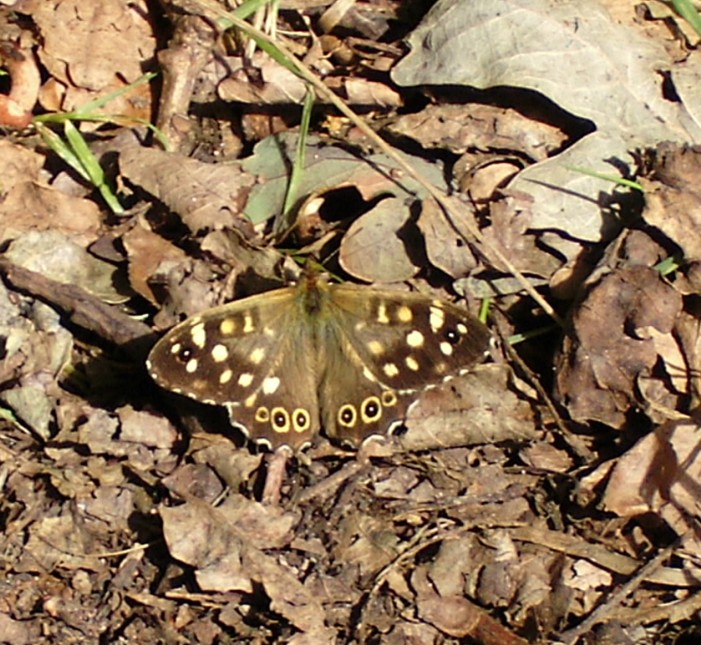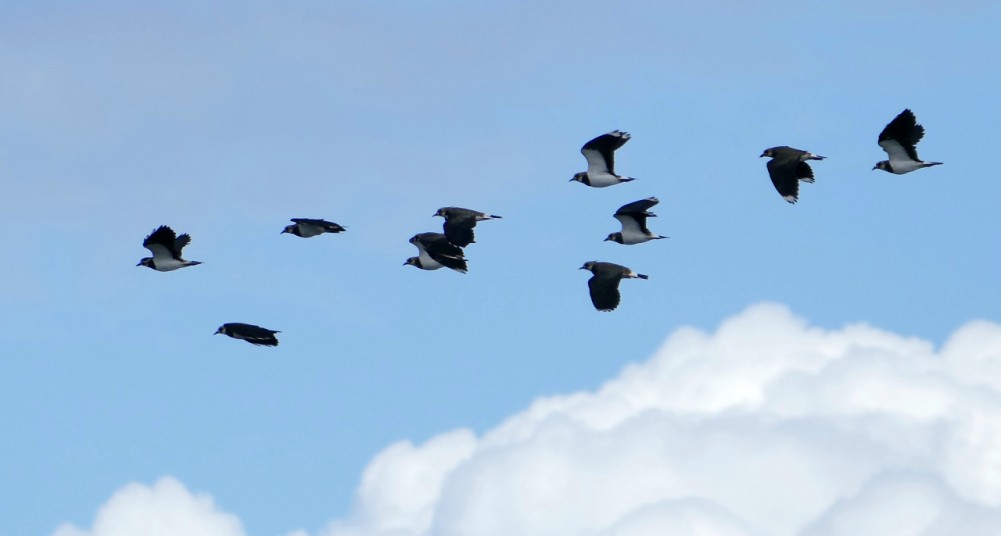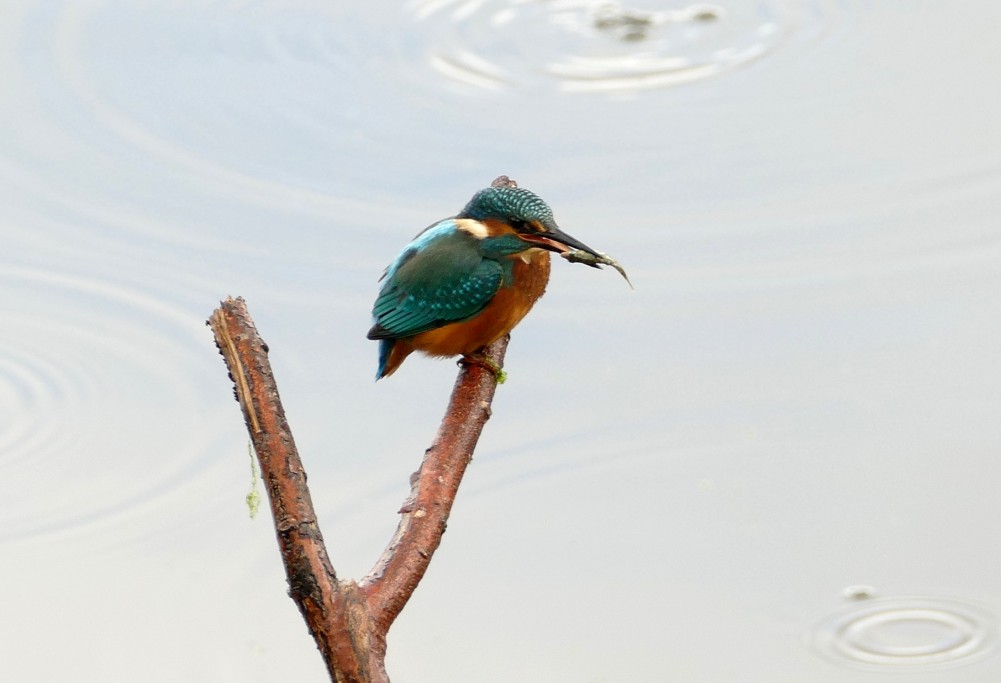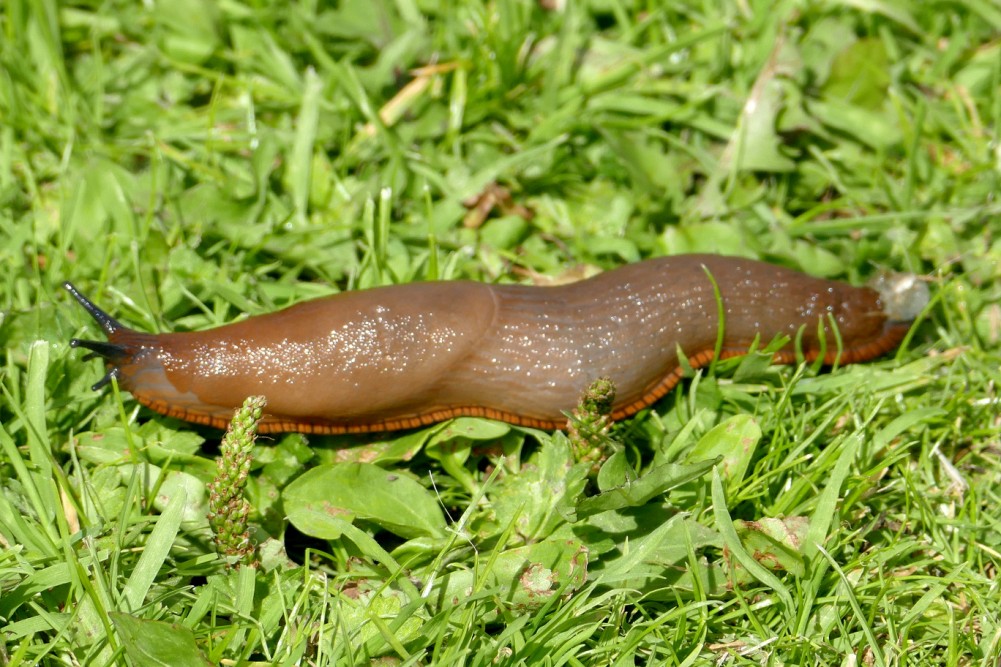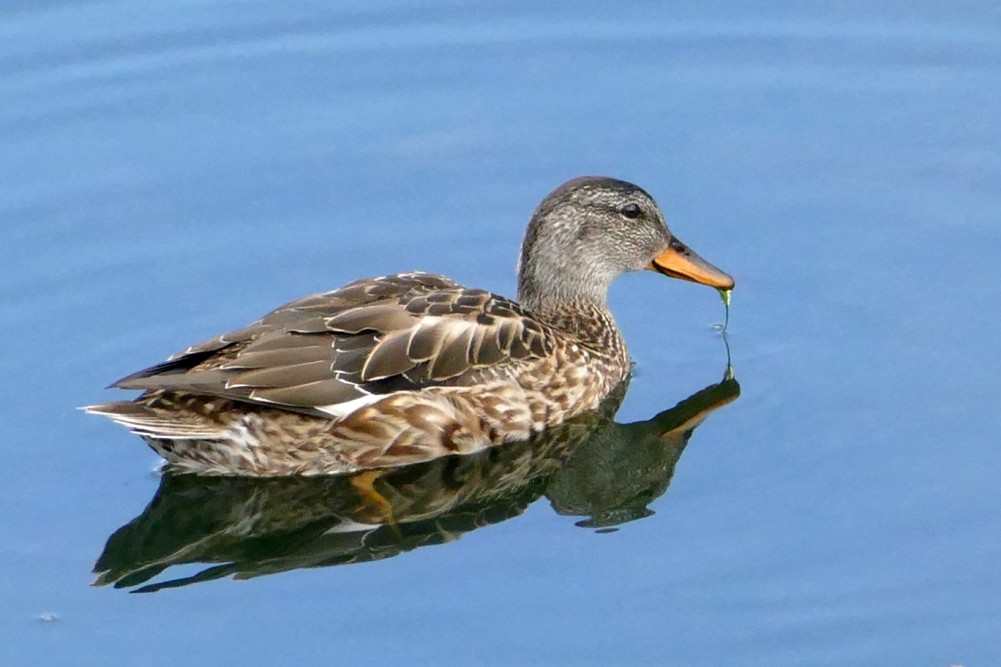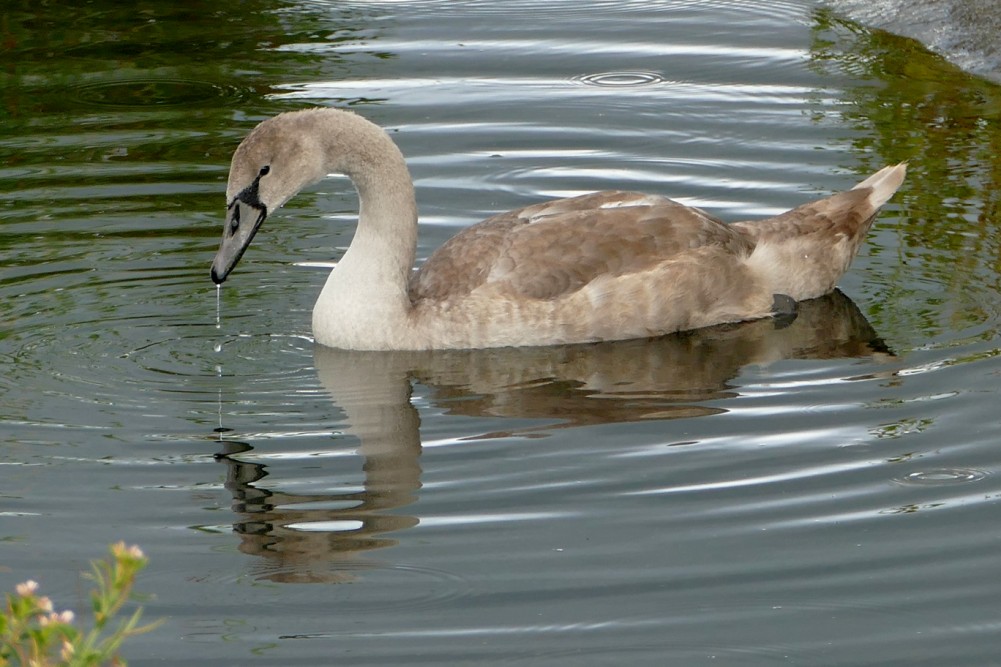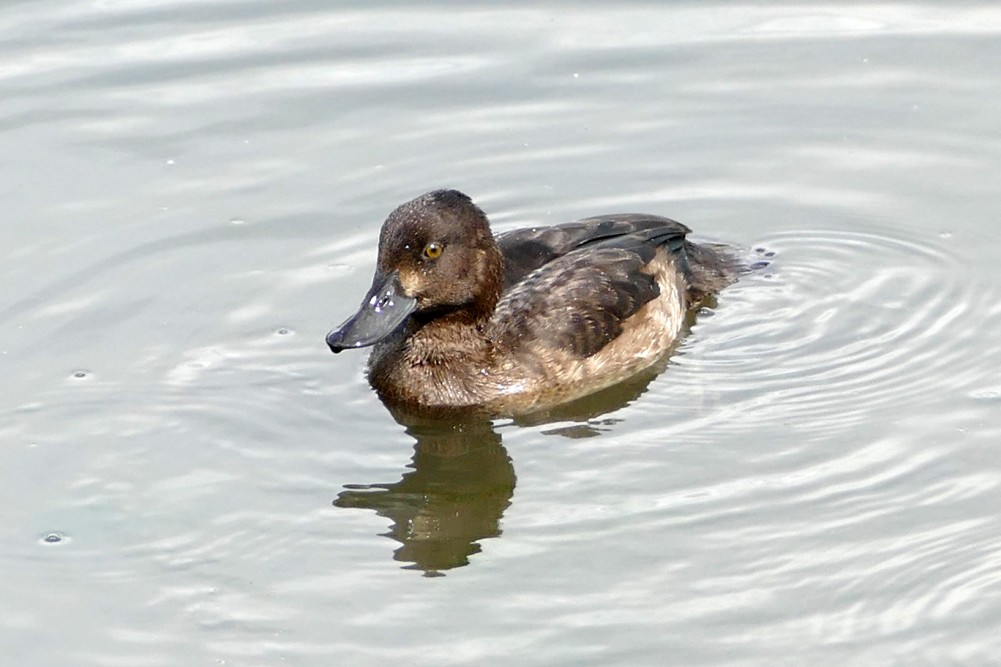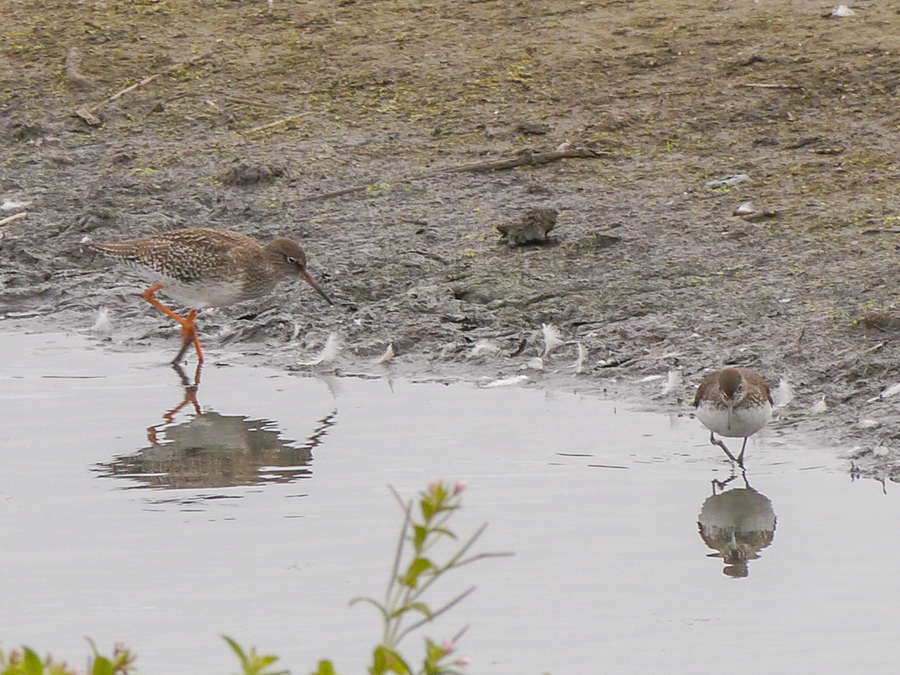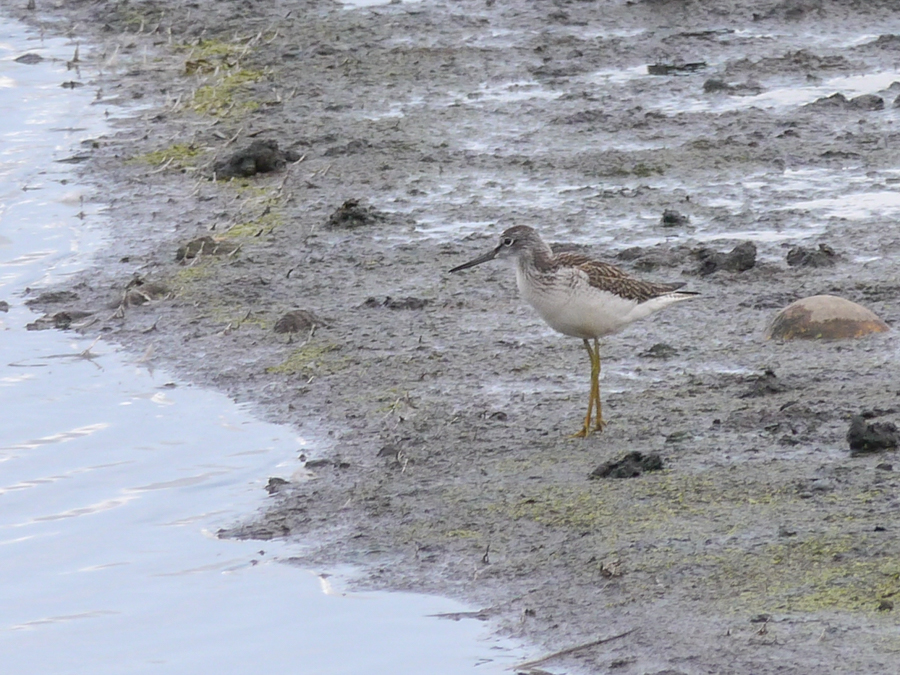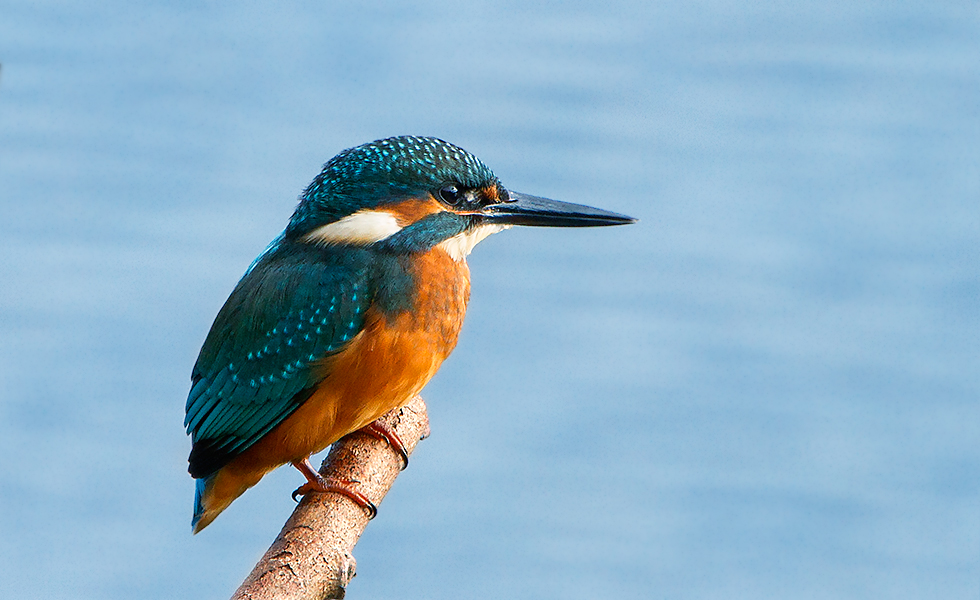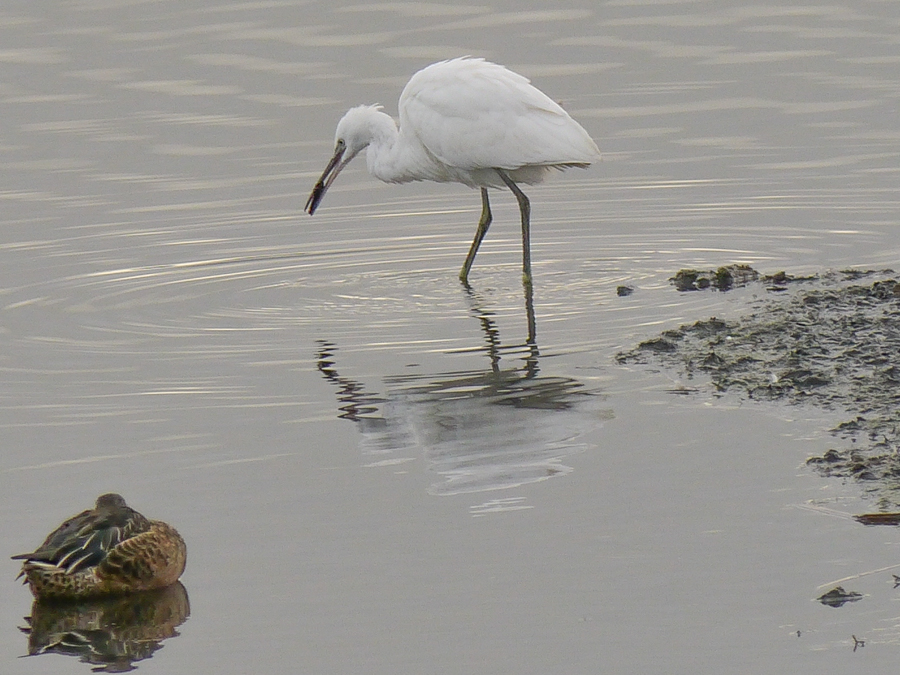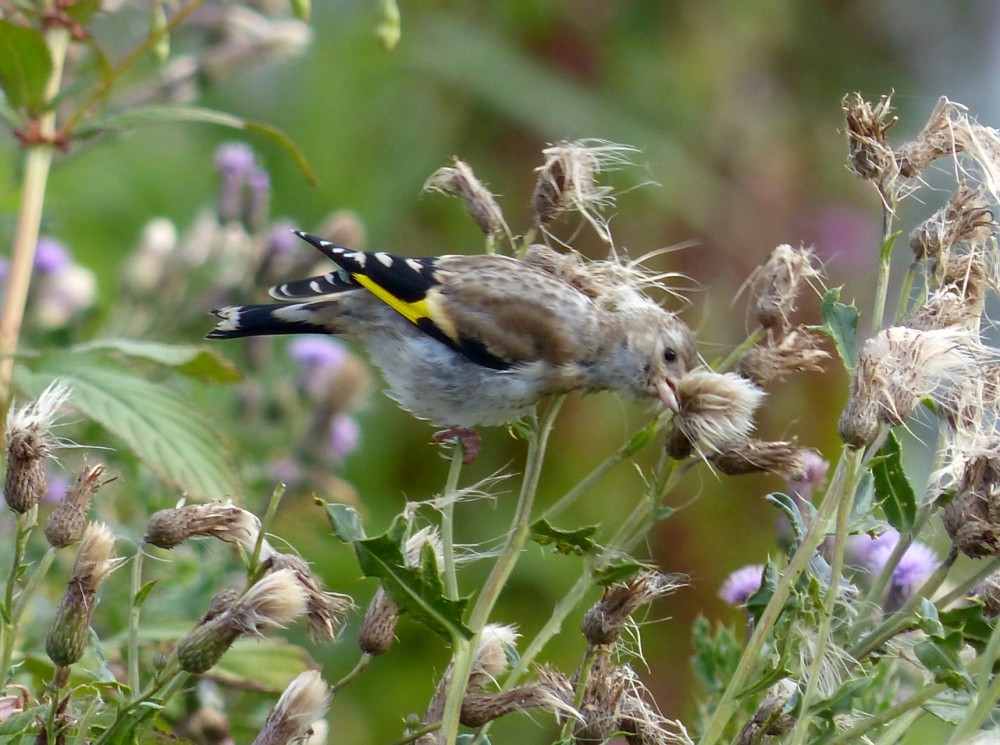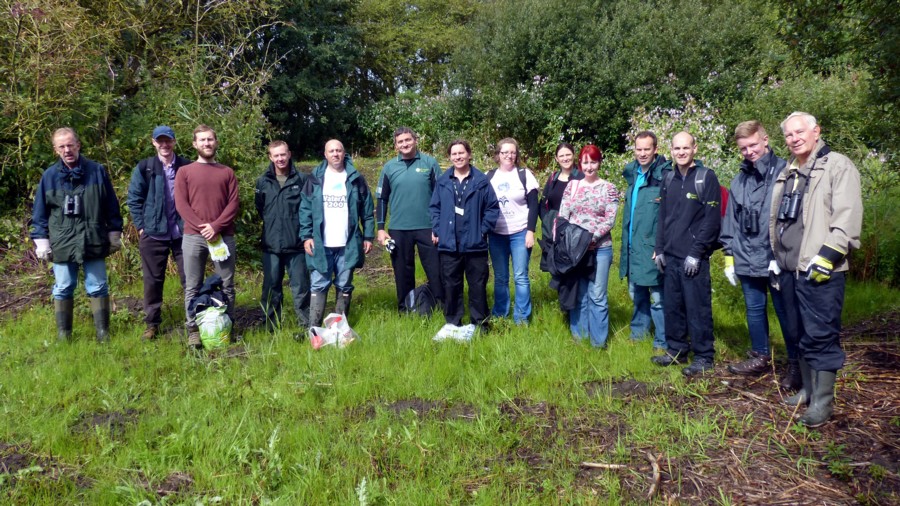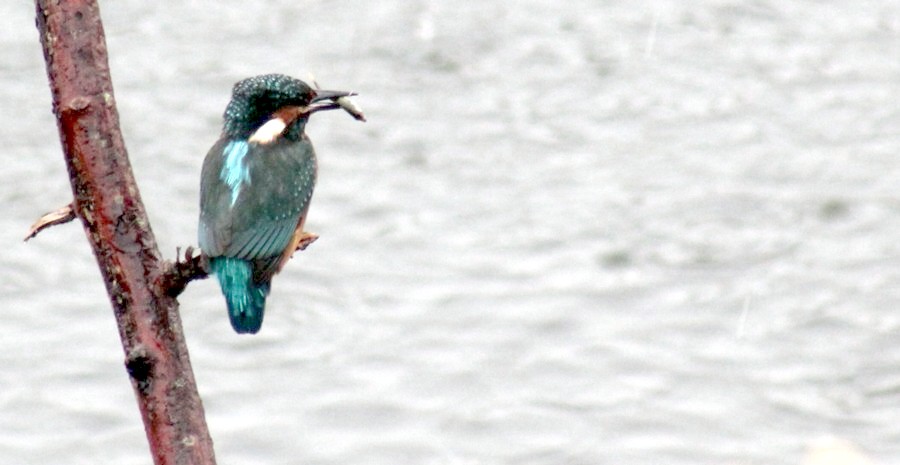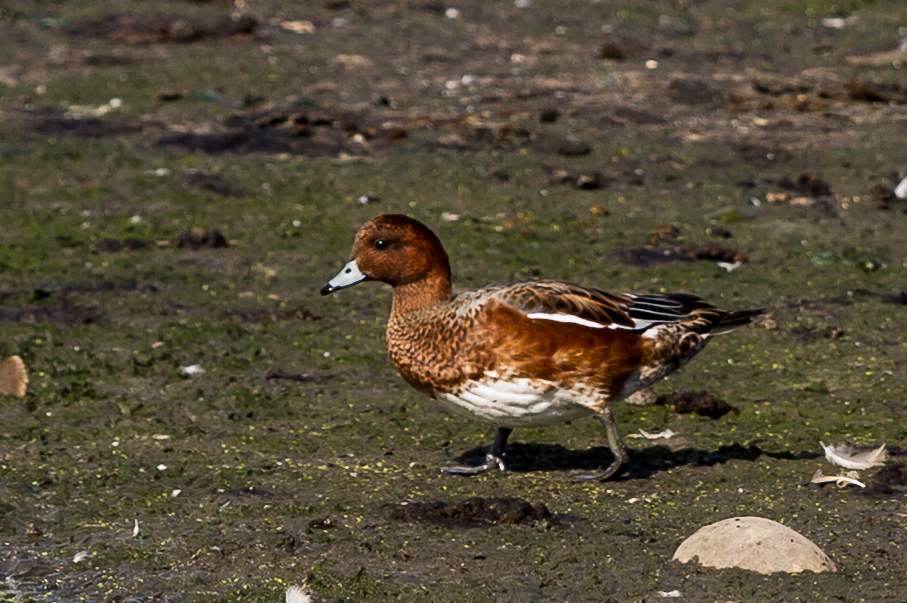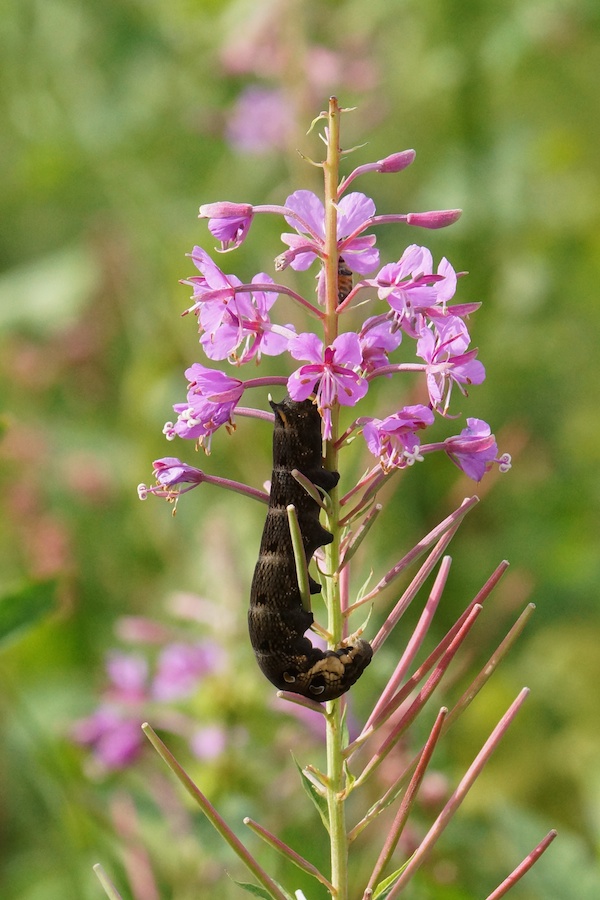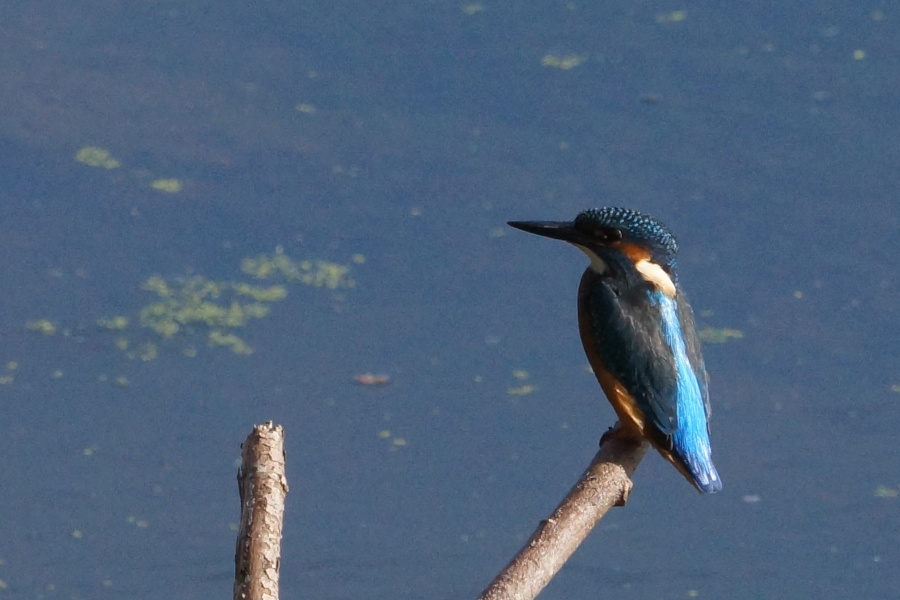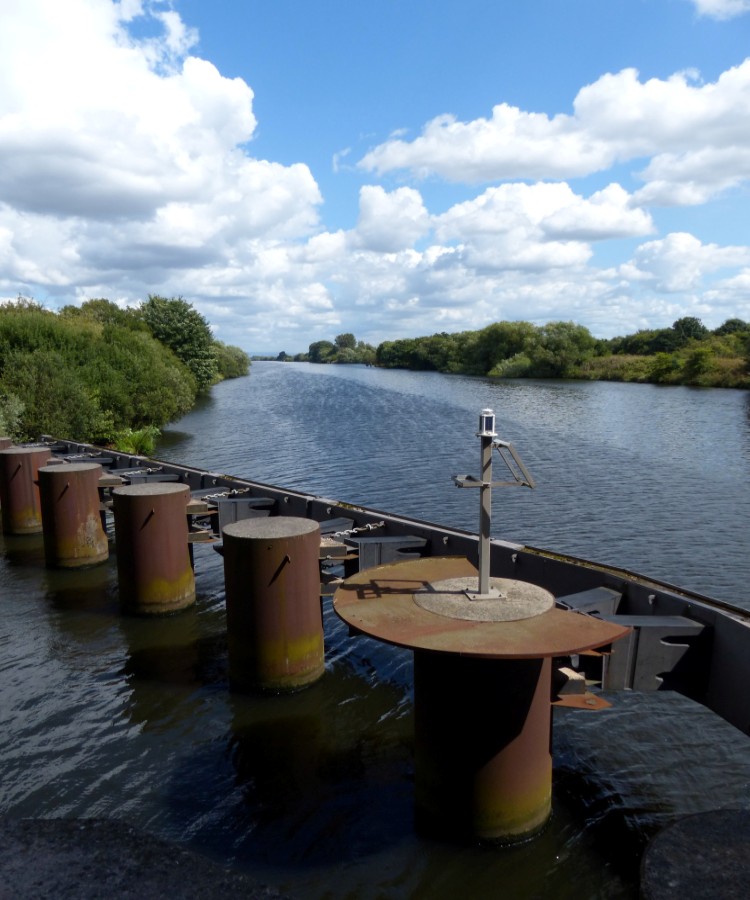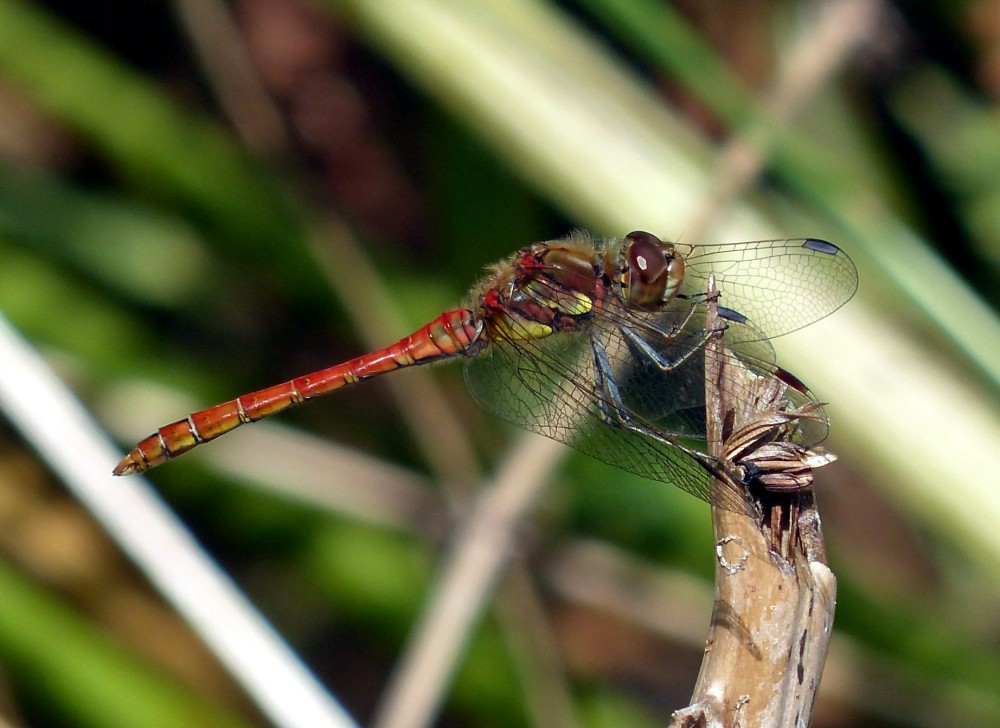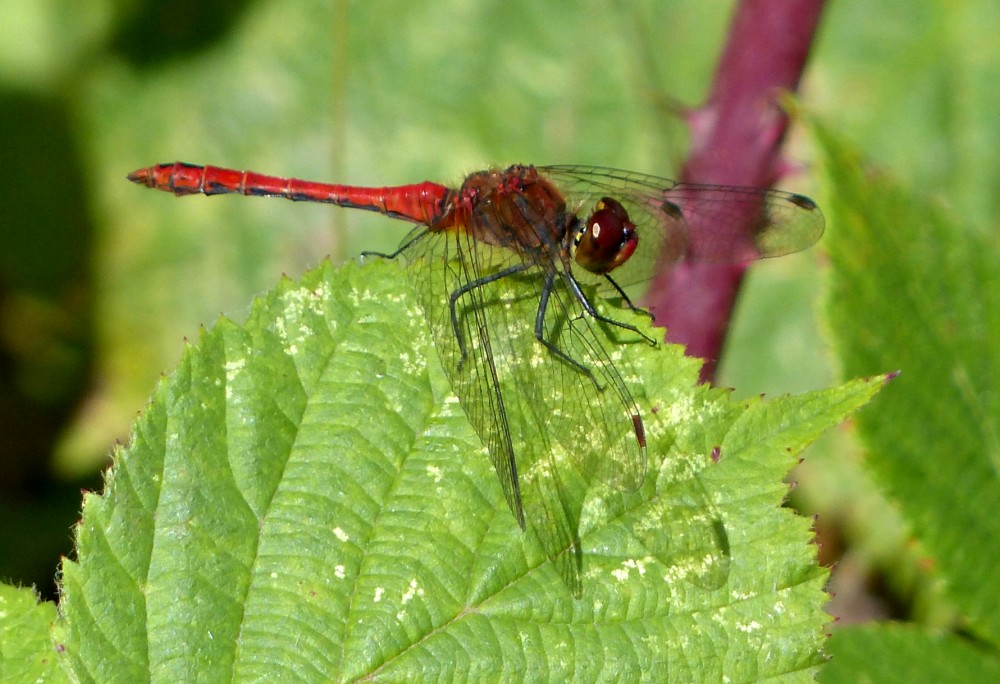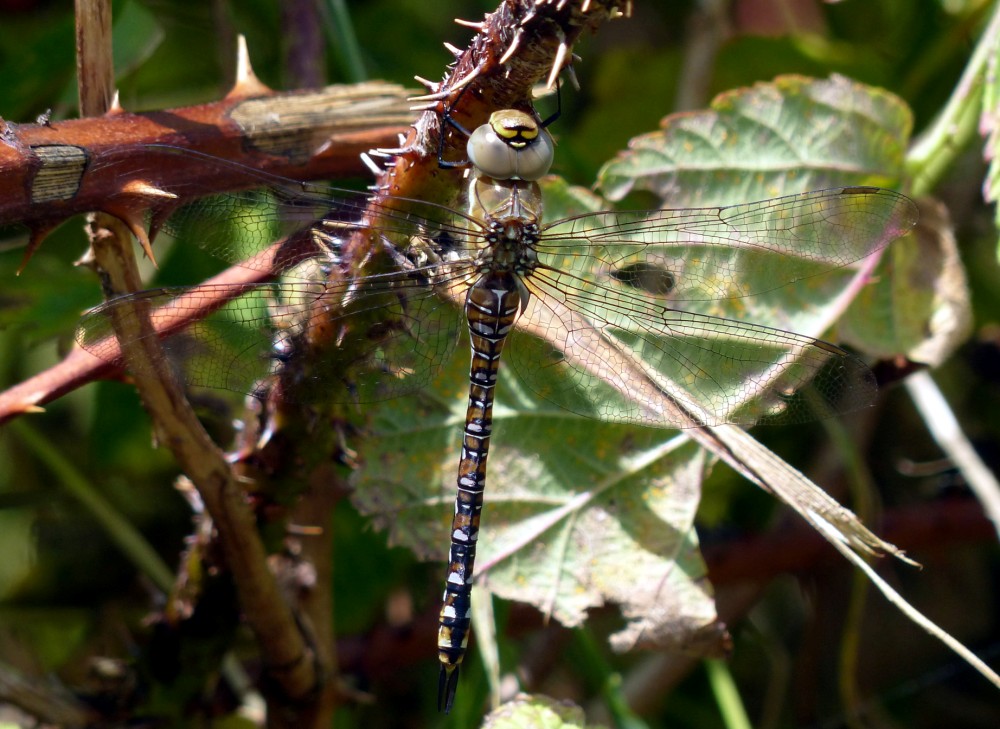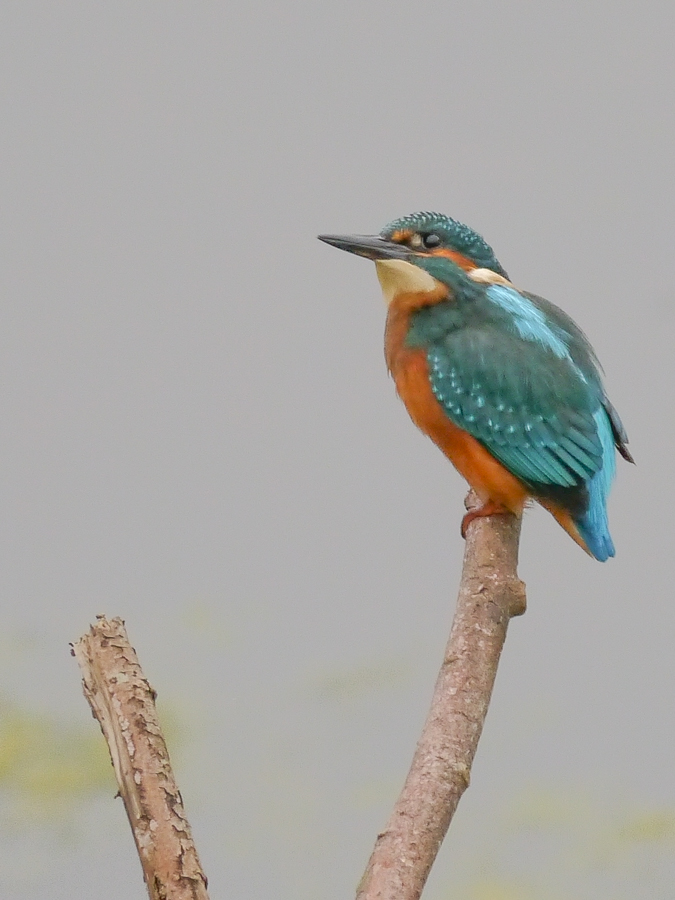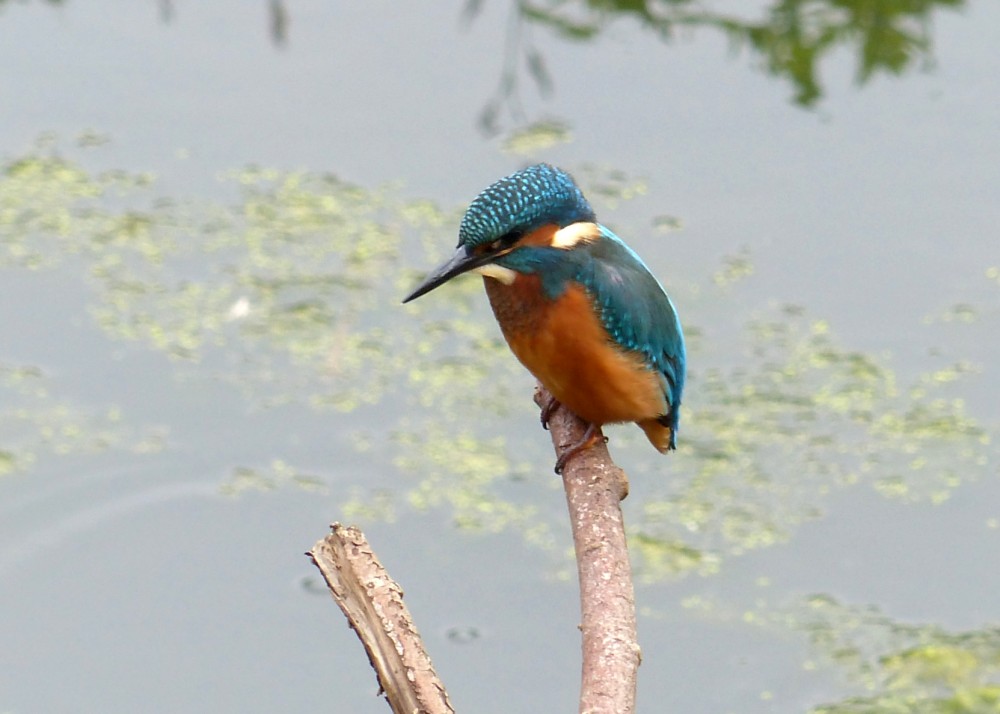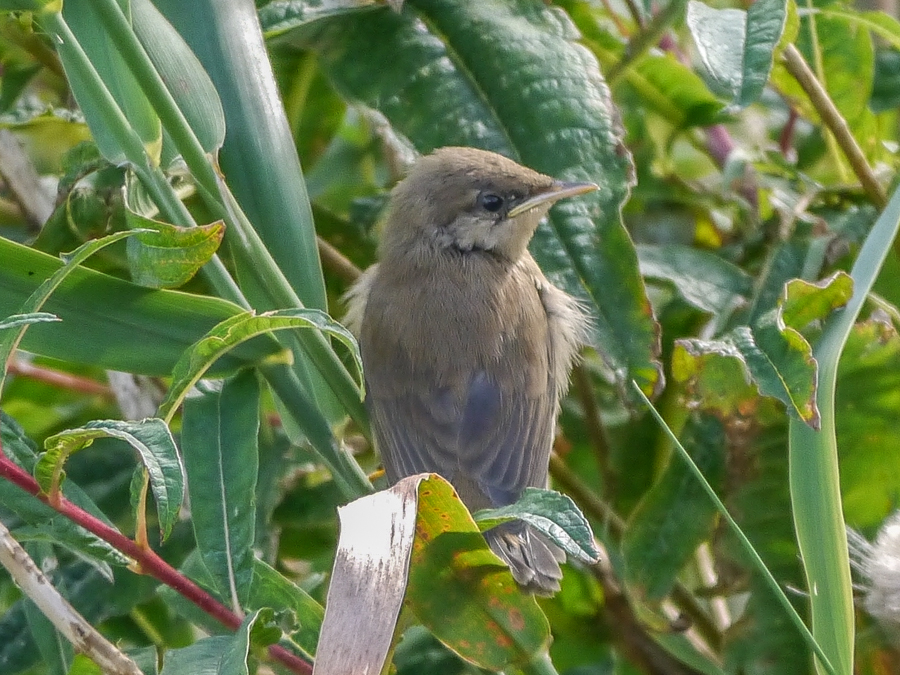Woolston Eyes Monthly Sightings
2014-08-10
Dave Riley was joined by John Blundell and Mike Baron for an evening session on No1 bed when a Swallow roost was targeted, a total of 61 birds were caught, with the 53 new including 45 Swallows. The following morning, Dave and Mike caught a further 86 birds with the highlights amongst the 71 new including 2 Sand Martins, 12 Chiffchaffs, 4 Garden Warblers, 10 Blackcaps, 10 Reed Warblers, 4 Sedge Warblers and 4 Whitethroats. Dave was back again on the Friday morning, when 70 birds were caught, 57 new, including another Garden Warbler, 2 Goldcrests and a Tree Pipit.
On No3 bed, ringing took place on Thursday, Friday and Saturday. On Thursday evening Kieran Foster set nets for Friday morning and targeted the Swallow roost. The birds were more unsettled than on his two previous attempts but the catch of 34 Swallows, all birds of the year, was a reasonable return. On Friday he was joined by Mike Baron and Chris Piner. In good conditions they made 107 captures (87 new and 20 retraps), new birds included 58 warblers. On the Saturday morning, Kieran and Mike Miles were joined by Justin Garner and they made 160 captures (118 new and 42 retraps), again warblers predominated with 79 ringed. During the three sessions, an impressive 71 Reed Warblers were ringed, Blackcap numbers have increased with 29 ringed and it is peak time for Garden Warblers with 5 ringed during the week, however, Lesser Whitethroat continues to elude them.
An interesting retrap was a Reed Warbler ringed as a 4 on 29th July 2010 and not encountered since. It is tempting to think that this bird was ringed as it migrated through Woolston rather than being a Woolston breeder.
Sightings on the Friday included 4 Tree Pipits grounded in front of the Morgan Hide and a Green Sandpiper and a Little Egret were seen on the Saturday.
Other sightings during the week included: 1 Common Sandpiper, 2 Little Ringed Plovers (8th), Marsh Harrier and a very photogenic Kingfisher in front of the Morgan Hide.
Submitted by: Dave Riley
2014-08-03
Ringing took place on No1 bed on the Wednesday evening with Dave Riley, Phil Guest, John Blundell and Mike Baron present with the intention of catching some Swallows as they went to roost, 40 birds were caught in total including 14 Swallows and 2 Sand Martins other new birds were 4 Sedge Warblers and 6 Willow Warblers. Dave and Mike had a further session the following morning when 89 birds were caught, the 81 new included the years first Lesser Whitethroat, 3 Garden Warblers, 15 Willow Warblers, 12 chiffchaffs, 10 Sedge Warblers and 9 Whitethroats.
On No3 bed, ringing was restricted to the first half of the week before the showers arrived. Kieran Foster targeted the hirundine roost on Monday evening taking 70 Swallows, including a British control and their first 2 Sand Martins of the year, also including a British control. He ran 8 nets on Tuesday morning making 72 captures (63 new and 9 retraps), as might be expected Warblers predominated with 61 out of the 72. Mike Miles renewed his battle with the balsam on Wednesday morning running just 3 nets and making 61 captures (38 new and 23 retraps), as might be expected around the feeders, 33 of these were finches.
Sightings during the week included: An unconfirmed report of a Spotted Redshank on 1st, 1 Water Rail, 3 Ruddy Duck,2 Kingfishers, 60 Swifts, 151 Coot, 11 teal, 3 Snipe, 40 Lapwings, 15 Swallows, 40 House Martins and 5 Sand Martins all on 2nd.
Submitted by: Dave Riley
2014-08-17
Dave Riley and John Blundell were both on No1 bed on the Thursday evening and Friday morning, 113 birds were caught over the sessions with 97 new, the highlights included 2 Sparrowhawks, including a large female, 3 Song Thrushes and 2 Garden Warblers. Sightings during the week included 3 broods of Little Grebes on the east pool.
On No3 bed, ringing took place on Thursday, Friday and Saturday morning. On Thursday Mike Miles spent 6 hours on the bed doing various chores, it was breezy, so he ran just the two sheltered nets by the feeders catching 25 birds comprising the usual feeder “customers”. On the Friday morning Kiernan Foster was joined by Chris Piner and Sam Bayley, they ran 13 nets including a new net position across the channel near the duck trap, they made 138 captures (97 new and 41 retraps). The “new” net caught Woolston’s first Kingfisher of 2014 and the only notable retrap was a Chiffchaff ringed as a juvenile in August 2012 and not re-encountered since. On the Saturday morning Kieran and Mike were joined by Margaret Rawlins, Jason Atkinson and Sam and with plenty of pairs of hands we ran 26 nets making 154 captures (114 new, 38 retraps and 2 British controls) . The “new” net caught 3 Swallows and Woolston’s fourth Green Sandpiper, a bird of the year, the first ever on No3 bed and the first at Woolston since 2004. The two controls were a Reed Warbler and a Sedge Warbler. A further adult Reed Warbler had originally been ringed on No.1 bed.
The week finished with 317 captures (221 new, 94 retraps and 2 British controls). 130 of the new birds were warblers. Sightings were limited to a large female Sparrowhawk flashing through the copse around the feeders and a flock of 15 Linnets over the car park.
Submitted by: Dave Riley
2014-08-24
Dave Riley was on No1 bed on the Wednesday, Friday and Sunday, when he was joined by John Blundell. On the Tuesday 37 birds were caught with 33 new including 25 warblers, Wednesday produced 53 birds, 45 new, including the second Lesser whitethroat of the year and the first Treecreeper of the year for the bed, with 23 warblers being ringed, 51 birds were caught on the Sunday, with 46 new including 25 warblers, highlights included another Treecreeper and two Garden Warblers. Sightings during the sessions included 1 Tree Pipit, up to 3 calling Water Rails and 3 Swifts.
Ringing took place on No3 bed on Tuesday, Wednesday, Friday and Saturday. On Wednesday the team dodged all the showers but on the Saturday ringing finished early when a significant band of rain moved through. Participants during the week included regulars Kieran Foster, Mike Miles, Margaret Rawlins, Hugh Pulsford, and Chris Piner plus visitors Justin Garner, Tom Squires and John Addshead
The week ended with 643 captures (514 new, 127 retraps and 2 British controls ) and having last week produced the bed’s first Green Sandpiper and a Kingfisher Kieran’s new net positioned across the channel by the duck trap this week caught a second Green Sandpiper, two House Martins ( Woolston’s first since 2010) and Woolston’s 13th Grey Wagtail, a juvenile, and Woolston’s first since 2002. Two trapping sessions on the Swallow roost produced 225 hirundines including a British control Swallow and a bonus Sparrowhawk, a typical juvenile male. The totals include 151 new warblers headed by an impressive 93 Blackcaps. Their second British control was a Blackcap and this is particularly interesting because it was wearing a size B ring meaning it was ringed as a pullus in a nest somewhere. Finally, they ringed 62 new Greenfinches of which there are very large numbers around the bed at the moment.
Sightings during the sessions included 40 Chaffinches and 10 Linnets in the ripening sacrificial crop and 50 Goldfinches feeding on thistle heads on the North Meadow. A Hobby was seen on several occasions.
Other sightings during the week included: Greenshank (19th and 22nd)), 326 Gadwall (20th), Redshank, 2 Green Sandpipers, 536 Gadwall (Woolston record count), 6 Swifts (all 21st), 3 Green Sandpipers, 2 Black-tailed Godwits, 1 Black-necked Grebe, 1 Snipe, 2 Kingfishers, 1 Wigeon, 4 Swifts, 2000+ Swallows, and a Hobby.
Submitted by: Dave Riley
2014-08-31
Dave Riley was on No1 bed on the Tuesday evening when the small Swallow roost contributed to the 6 birds ringed and a wandering bird from No3 bed was retrapped, highlight of the session, however, was a Spotted Flycatcher, only the third to be ringed on the bed since 1995 and the first since one was ringed on 30/08/2009. The following morning, he was joined by Mike Baron when 74 birds were caught, the 54 new included 19 Blackcaps, the first great Spotted Woodpecker of the year for the bed and a male Redstart, the first since 01/07/2011. On the Sunday morning, Dave was joined by Mike, John Blundell, Phil Guest and Tony Davies, 91 birds were caught, including the first Meadow Pipits of the year (3), a male Sparrowhawk, 21 Blackcaps, 5 Willow Warblers and 13 Chiffchaffs. Sightings during the week including a Tree Pipit on the Wednesday, female Redstart on the Friday, when a minimum of 100 House Martins flew south over the bed.
For the No3 bed team it was another week of working round the weather fronts to maximise ringing opportunities. Ringing took place on Wednesday morning and Sunday, with Swallow roost ringing on Tuesday evening and Saturday evening.
The week ended with 490 captures (401 new 88 retraps and 1 British control), 118 hirundines included 2 retrap Swallows and 1 British control and 175 new warblers were led by 100 new Blackcaps making 193 new Blackcaps in the last two weeks with the traditional peak month of September still to come. They caught a third Green Sandpiper, this time an adult, these are the 10th to 12th examples in Merseyside Ringing Group’s history in the space of three weeks spring traps were also deployed to catch two juvenile Water Rails, their first since 2012. A retrap wren had been ringed as a juvenile in 2010, retrapped a month later and then not reencountered until Wednesday.
Other sightings include: Hobby and Little Egret on No3 bed (25th), Dave Hackett walked the reserve on 27th and found Speckled Woods were particularly numerous with an excellent count of 94, he also had a count of 35 Red Admirals, the highest for many years. A probable Spotted Crake, also reported on 27th, from the Rotary Hide at 8.00 pm, along with 1 Greenshank, 3 Green Sandpipers, 1 Snipe, 1 Water Rail, 1 Kingfisher, 2 Black-necked Grebe juveniles, 3 Wigeon, 25 Swifts and a record 843 Gadwall were counted on 28th.
Submitted by: Dave Riley
2014-08-31
Im not 100% sure about this one, but this could be a Purple Hairstreak Butterfly. Its not in the best condition which makes identification even harder.
Submitted by: David Waterhouse
2014-08-31
I think it is impossible not to smile, in the presence of Sunflowers :) Lots of them in the meadow.
Submitted by: David Waterhouse
2014-08-31
Little Egret in flight - flew right over the morgan hide and then turned left. Thought it was a Heron at first, but was too white.
Submitted by: David Waterhouse
2014-08-31
A walk around No.4 bed this morning; the elder bushes were alive with warblers mostly Blackcaps but also Chiffchaff (see photo), Willow Warbler, Whitethroat and 1 Garden Warbler. On the loop there was a single Snipe and a roost of 144 Lapwing. Earlier on No.3 bed there were at least 2 Green Sandpipers,2 Water Rail, 1 juv Black-necked Grebe and Kingfisher
Submitted by: David Spencer
2014-08-28
Another evening visit in the hope of seeing the badgers but no luck on this occasion. However there was ample compensation in the form of huge numbers of Gadwall. Arriving on No.3 bed at about 7 p.m. I initially counted about 700. By 8.15 these had increased to 843 including 450 in front of the John Morgan Hide alone. In fact they were so numerous that it was difficult to get an accurate count. Also present were 184 Coot, 2 juvenile Black-necked Grebes and a large dog fox in front of the Sybil Hogg Hide.
Submitted by: Dave Hackett
2014-08-29
Redstart on No1, Bed this morning at 11:15am. This is a different bird to the Redstart ringed on the same bed on Wedmesday 27th.
Submitted by: Dave Riley
2014-08-28
In addition to the Badgers, a Fox was seen from the John Morgan hide on the evening of the 24th.
Submitted by: David Spencer
2014-08-27
Tonight’s highlights included: a probable Spotted Crake, reported from the Rotary Hide at 8.00 pm by David Benson, which we couldn’t relocate in the fading light, 1 Greenshank, 3 Green Sandpipers, 1 Snipe, 1 Water Rail, 1 Kingfisher, 2 Black-necked Grebe juveniles, 3 Wigeon, 25 Swifts and 2 Badgers. The Swallow roost seems to have broken up, with just a couple of hundred gathering before heading off.
Cheers David (with David Spencer, Greg Baker, Barbara Baker, Ste Dodd, Diane Shepherd and George Dunbar)
Submitted by: David Bowman
2014-08-27
A lovely sunny day for my weekly walk round the reserve. Speckled Woods were particularly numerous and a count of 94 was excellent. It has been a good year for Red Admirals and a reserve-wide total of 35 was the highest for many years. On No.3 bed a Green Sandpiper was in front of the Frank Linley Hide whilst over 150 Lapwing were on the Loop of No.4 bed. Photo; Speckled Wood at the entrance to No.3 bed
Submitted by: Dave Hackett
2014-08-25
Woke early and went onto No.3 bed for a couple of hours at dawn. With 2,000 Swallows leaving the roost, it was no surprise to see a Hobby cutting through them. A Little Egret also left not long afterwards, heading west. On the scrape both Green Sandpiper and Water Rail gave good views, while overhead 3 Swifts headed south.
Cheers David
Submitted by: David Bowman
2014-08-24
No.3 bed Still 2 juvenile Black-necked Grebes seen together in front of Morgan hide. Total of 10 Little grebes (8 adults,2 juveniles),0ne drake Ruddy duck,277 Gadwall,2 Kingfishers with one perched in front of Morgan hide to the delight of photographers.One Green Sandpiper and a fine Greenshank on mud by south hide platform.Ca. 50 House martins and a few Swallows.Two broods of Tufted Duck both of 7 young but of different ages.
Submitted by: Brian Martin
2014-08-23
Here’s a Youtube link to a clip of a male Kingfisher eating two Sticklebacks in front of the Morgan Hide this morning.
https://www.youtube.com/watch?v=dt2peUxjCDo
Cheers David
Submitted by: David Bowman
2014-08-23
Here’s a link to a Youtube video of two of this morning’s three Green Sandpipers in front of the Morgan HIde.
https://www.youtube.com/watch?v=8oj1_7T2xEo
Cheers David
Submitted by: David Bowman
2014-08-23
Yawn!….another photo of a Kingfisher with a fish :-)
Cheers David
To view a video of the Kingfisher eating Sticklbacks ‘click’ on ‘Articles’ at the bottom of this page and click on the link ‘1 Kingfisher No.3Bed August 2014’ then click on the You Tube link which is highlighted.
Submitted by: David Bowman
2014-08-23
Here’s a bit of variety - some mobile Song Thrush food from this morning!
Cheers David
Submitted by: David Bowman
2014-08-23
After a week of being holed up with a medical problem, it was good to get out again. A morning of sunshine and heavy showers on No.3 bed, taking it easy, resulted in notable sightings of : 3 Green Sandpipers, 2 Black-tailed Godwits, 1 Black-necked Grebe, 1 Snipe, 2 Kingfishers, 1 Wigeon and 4 Swifts. Once again, the Kingfisher was regularly on the perch in front of the Morgan Hide and at one point two Kingfishers were on the same perch. Yesterday evening, the roost of c.2,000 Swallows attracted a Hobby (per K. Foster), though there was no sign of the Marsh Harrier or Greenshank from earlier in the week.
Photo of a Tufted Duck from this morning
Cheers David (with David Spencer, Brian Baird and Ste Dodd)
Submitted by: David Bowman
2014-08-21
Following the excellent count of Gadwall on 20th August by Brian Martin and me I paid an evening visit to No.3 bed. I counted 536 Gadwall which is a record total for Woolston. It is not clear whether these large numbers are present in the day time but in cover or whether they come in from other sites in the evening. Whilst I was present about 30 flew in around 7.30p.m. The previous day there had been about 30 on the Loop of No.4 bed. Also present were about six Swifts and a Green Sandpiper.
Submitted by: Dave Hackett
2014-08-22
1 Greenshank was seen from the south screen early morning by Bert Lloyd. The Kingfisher showed well from the perch below the John Morgan hide for at least 20 minutes mid-morning, catching two fish.
Submitted by: David Spencer
2014-08-21
2 Green Sandpipers were present on the scrape today together with a Redshank.
Submitted by: David Spencer
2014-08-20
There was an autumnal feel to the weather today but it proved to be a pleasant day with plenty of interest. At the locks were 3 Common Gulls and a Grey Wagtail. A group of gulls at Bollin Point included about 20 Lesser Black-backed. On No. 3 bed there were excellent numbers of Gadwall (326) and Coot (202). About a hundred House Martins were present together with 57 Canada Geese, 12 Shoveler, 2 juvenile Black-necked Grebes and a minimum of 130 Greenfinches. 43 Lapwing were counted and on the Loop of No.4 bed there were a further 121 and 36 more Gadwall. Due to the cool, cloudy weather very few butterflies were on the wing but numbers of Speckled Wood are increasing and hopefully there will be good counts of this species in the next few weeks.
Submitted by: Dave Hackett
2014-08-19
A Greenshank paid a brief visit to the scrape in front of the John Morgan Hide this morning before flying out of sight on to the north bank. Marsh Harrier, Hobby and Peregrine have been seen by various observers over the past few days from the hide.
Submitted by: David Spencer
2014-08-19
Great morning visit (12-08-2014) to capture the Kingfisher on the new post. anyone interested can find more pictures at my web site http://glensbirdphotos.weebly.com/ Thanks Glen
Submitted by: Glen Ellis
2014-08-14
Today’s Little Egret was roosting in the center of the bed but paid a brief visit to the scrape before flying off west at 7:20 a.m.
Submitted by: David Spencer
2014-08-14
Photo of a Goldfinch feeding on thistles from the Morgan Hide this morning.
Cheers David
Submitted by: David Bowman
2014-08-14
A few of us spent today working with a group of volunteers from the Environment Agency to try and clear one of the densest areas of Himalayan Balsam on No.3 bed. The day was a great success and incidental sightings included: 1 Little Egret leaving a roost on the bed (per Dave Spencer and Les Jones) and later, 2 Green Sandpipers and a Greenshank. There are at least 6 Black-necked Grebes still present, though they’ll probably soon be ready to move on.
Photo of today’s “balsam bashers”
Cheers David (with Dave Spencer, Les Jones, Brian Martin, Brian Baird, George Dunbar and Craig Higson and his EA colleagues)
Submitted by: David Bowman
2014-08-09
No.3 bed 3 adult and 9,possibly 10, full grown Black-necked grebes. Best place to see them is from the Rotary hide where the adults were present.The south pool is also holding young birds and 4 were seen from the Morgan hide. 82 Coot and a Kingfisher hovering about 10 feet above the water for about 15 seconds in front of the Rotary hide. A Sparrowhawk with prey flew off no.3 on to No.4 bed. 20 Broad-leaved Helleborines near Linley hide. A flock of 50 plus Gadwall flushed by a Buzzard.
Submitted by: Brian Martin
2014-08-10
Paul Hazelhurst saw a female Marsh Harrier from the John Morgan Hide this morning, the first report since late May. He also added to the Kingfisher portfolio, this time after a successful dive for fish.
Submitted by: David Spencer
2014-08-09
Quiet Afternoon only thing of note was a buzzard calling in flight almost continually aver the Mersey loop, a large party of Willow warblers and a single swift passing through. Managed to catch up with our semi-resident eclipse male Wigeon.
Brian Burnett
Submitted by: Brian Burnett
2014-08-09
Addedendum to Kingfisher.
Within 2-3 seconds of taking the kingfisher photo it escaped being a meal for a Sparrowhawk by inches. Heres hoping it comes back to the stick. Douglas
Submitted by: Douglas Buchanan
2014-08-09
A smart caterpillar of a Elephant Hawk Moth on Willow Herb a regular food plant. I found it in the winter seed crop but did not see any more.
Submitted by: Douglas Buchanan
2014-08-09
The stick does the trick. My first good photo of a kingfisher after years.
Submitted by: Douglas Buchanan
2014-08-09
Photo of the view east along the Ship Canal from Thelwall Viadust.
Cheers David
Submitted by: David Bowman
2014-08-09
Photo: View north from Butchersfield Tip this morning.
Cheers David
Submitted by: David Bowman
2014-08-09
Another good morning, roaming from No.3 bed as far east as Bollin Point. Highlights were: a fly-over Little Egret, 3 Black-necked Grebes , 2 Ruddy Ducks,3 Snipe and a Green Sandpiper, 2 Tawny Owls and 3 Garden Warblers (these latter three records from Kieran Foster et al) all from No.3 bed. Heart-in-the-mouth moment also came from No.3 bed, when the Kingfisher which has adopted the new perch in front of the Morgan Hide, came within a talon’s breadth of being snatched by one of the local Sparrowhawks. At the eastern end of the Reserve, possible three different Peregrines, including an immature bird, may well have been from the local breeding site.
Photo of a Migrant Hawker dragonfly from Butchersfield Tip.
Cheers David (with Dave Steel, David Spencer, Paul Hazlehurst, Brian Baird, Les Jones, Helen Allan, Ste Dodd, Diane Shepherd and George Dunbar)
Submitted by: David Bowman
2014-08-08
Another view of today’s’ Kingfisher. If it continues to use this branch, expect to see more photos!
Submitted by: David Spencer
2014-08-08
Managed to squeeze in some birding before and after a site meeting on No.3 bed. Migration was evident with 4 Tree Pipits, 1 Common Sandpiper and 2 Little Ringed Plovers on the Morgan Hide scrape at various times - (David Spencer also reported a Green Sandpiper from the Loop of No.4 bed.) Overhead, 60 Swifts, 55 House Martins and a few Sand Martins and Swallows were feeding, while a Sparrowhawk scattered the 60 Greenfinches plus Willow and other tits from the feeders. As we’ve just had a perch put at the water’s edge, to give everyone close views of Kingfisher, it was pleasing to see it in constant use all morning. Here’s my little bridge camera photo of the Kingfisher on it’s new perch - can’t wait to see what some of our proper photographers can do!
Submitted by: David Bowman
2014-08-04
A quiet morning; the only think to note was a juvenile Reed Warbler with an adult showing from the John Morgan hide.
Submitted by: David Spencer
2014-08-02
We went onto No.3 bed this morning hoping for the odd passage wader to be brought in by the rain (there was an unconfirmed report of a Spotted Redshank from yesterday) but no such luck. Black-necked Grebe numbers are reducing as birds start to disperse and 1 Water Rail, 3 Ruddy Duckd,2 Kingfishers, 60 Swifts, 151 Coot, 11 teal, 3 Snipe, 40 Lapwings, 15 Swallows, 40 House Martins and 5 Sand Martins were notable sightings.
Cheers David (with Dave Steel, David Spencer, Paul Hazlehurst, Les Jones, Helen Allan and Diane Shepherd)
Submitted by: David Bowman

